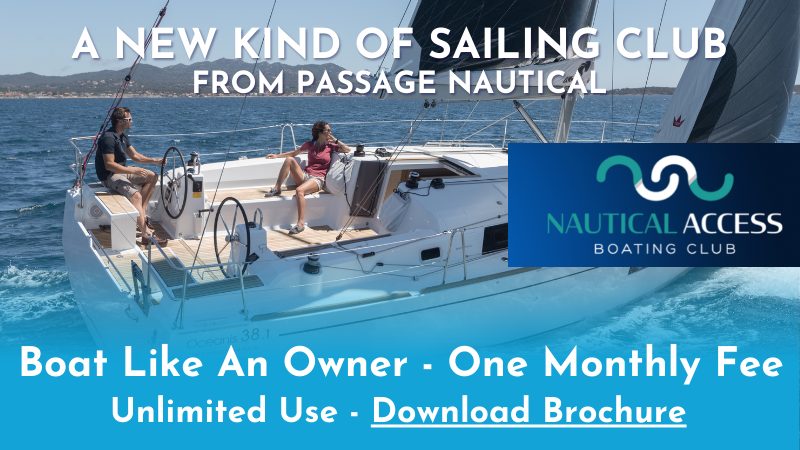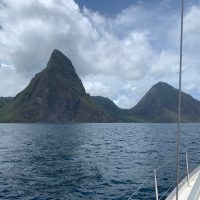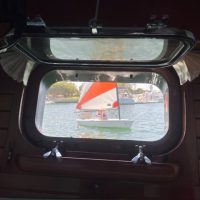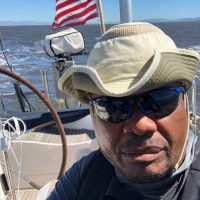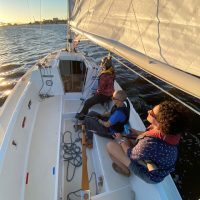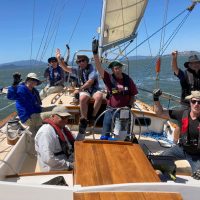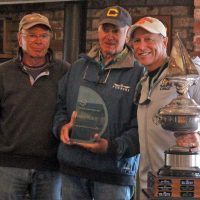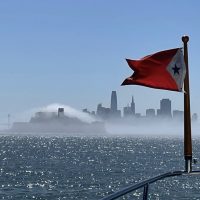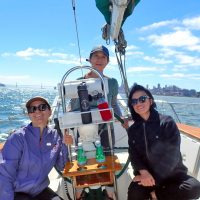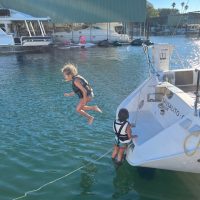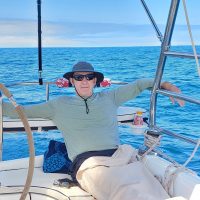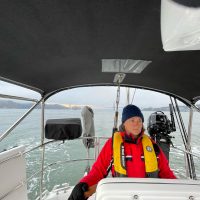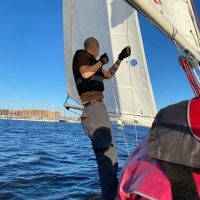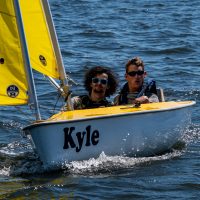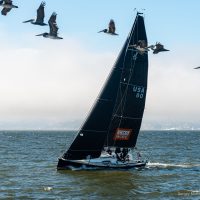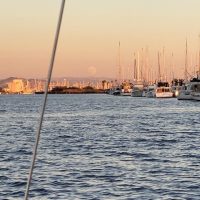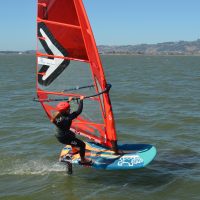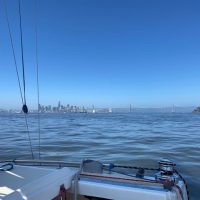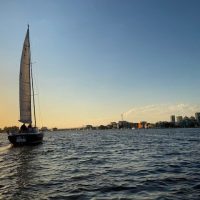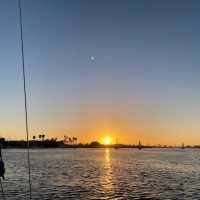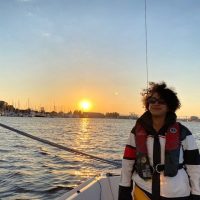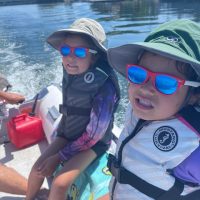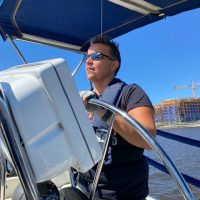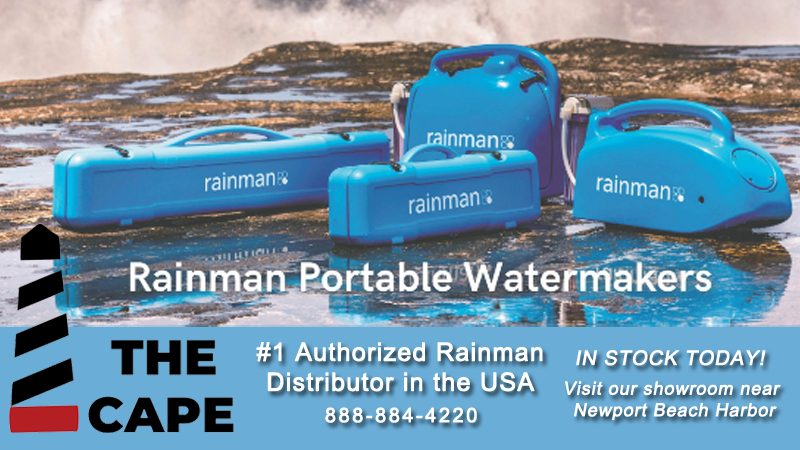
Making Friends and Connections at the Baja Ha-Ha Fall Crew List Party
People started showing up at 3 p.m. for last night’s Baja Ha-Ha Mexico Cruising Seminar and Latitude 38 Fall Crew List Party at Spaulding Marine Center in Sausalito, and the night couldn’t have been better. The traditional, cool Sausalito fog had backed off, leaving bright blue skies and comfortable temperatures, making the indoor/outdoor boatyard venue an ideal setting for this annual fall gathering of sailors. Close to 300 sailors, cruisers, boat owners and crew came to connect to sail the Bay or over the horizon to Mexico and beyond.
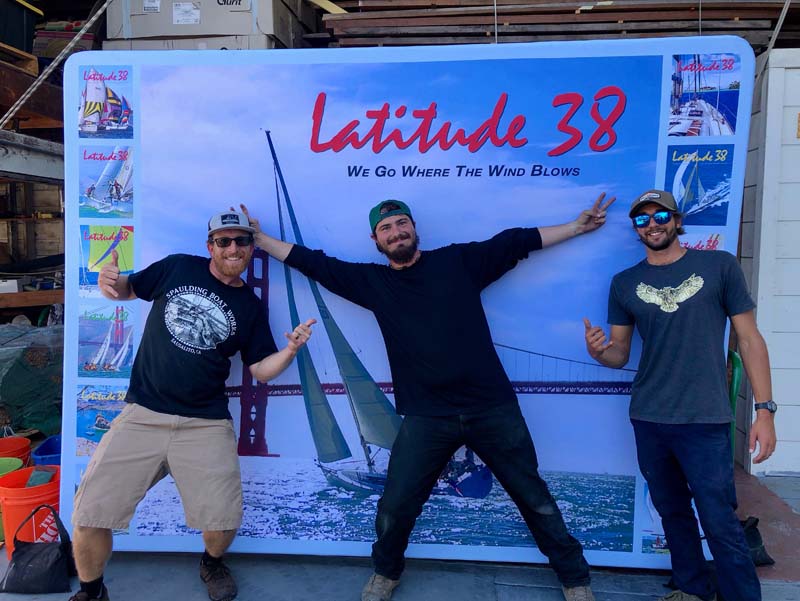
The 4-5:30 seminar covered lots of ground, including all the tips on TIPS and Mexico cruising do’s and don’ts as cruisers took notes for their sail south this year, though some were preparing for next year. Hands were raised on communications, with people split on Iridium GO! and inReach, and Patsy Verhoeven admitting to now being a big fan of Starlink. Some said they’re planning to mail postcards home.
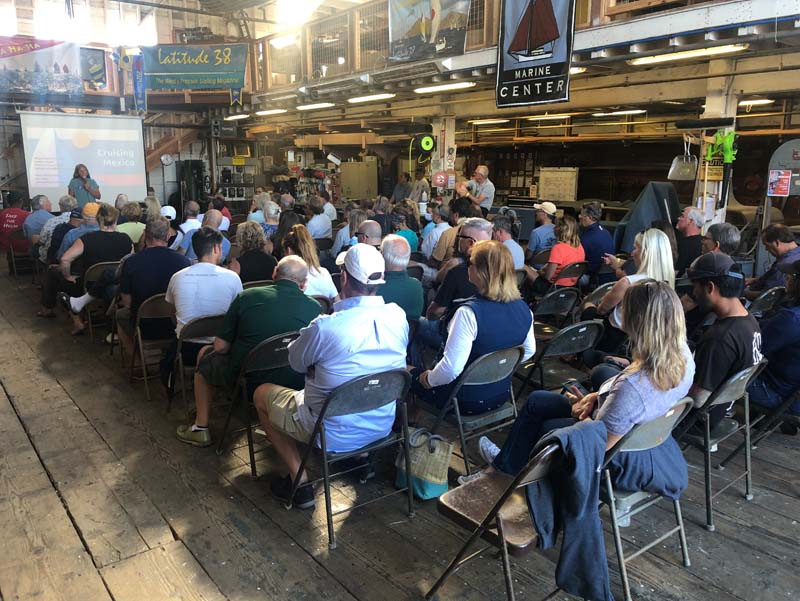
It was a full house at the classic boatyard, with many walking in saying, “Wow, I love this place!” Spaulding Marine Center is a piece of Bay Area waterfront history that serves as a foundation for teaching skills to apprentice craftsmen looking for future employment in the marine industry. In the off hours Latitude 38 was happy to return so folks on our Crew List have a chance to meet in person, swap tales, swap contact information, and find that ride or crew for the next race or cruise. Also on hand were volunteers from the Island Yacht Club, Sailing Science Center, Douglas Samp from the US Coast Guard and Baja Ha-Ha sponsors Downwind Marine and Marina Riviera Nayarit.
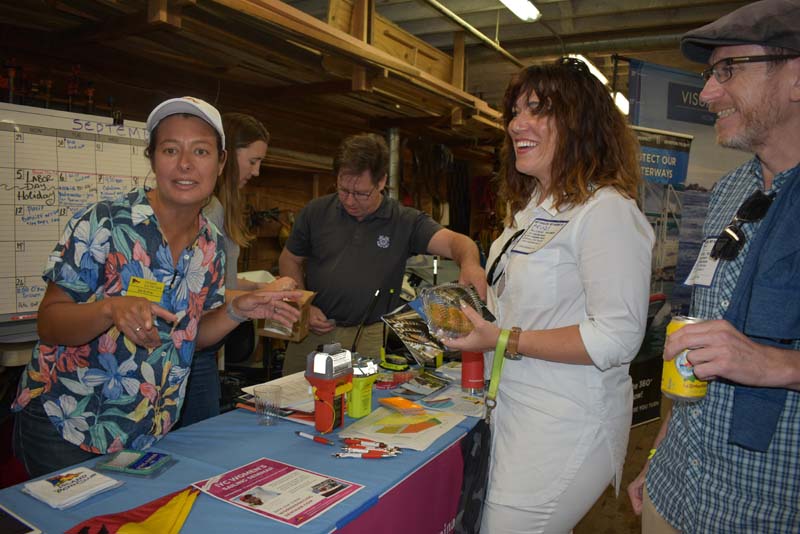
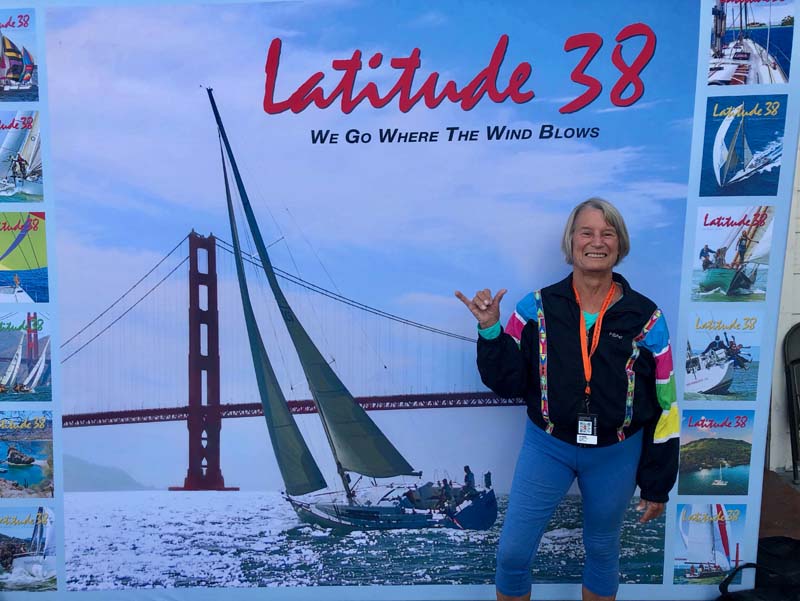

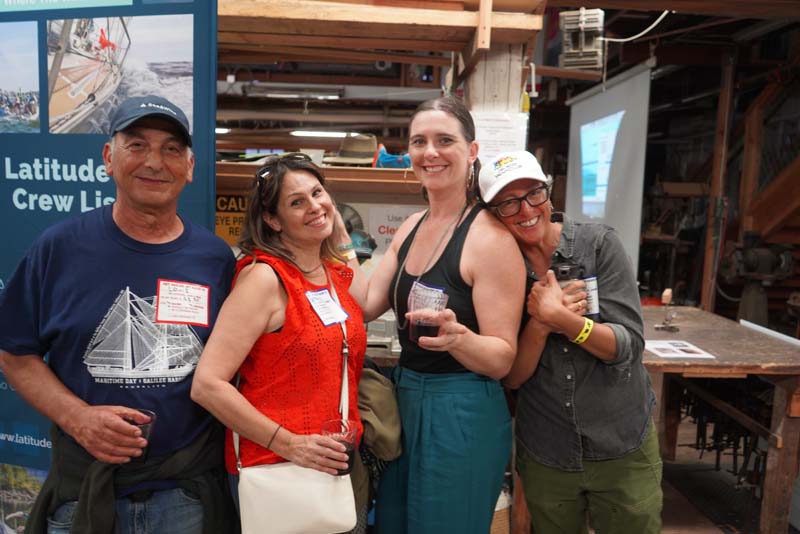
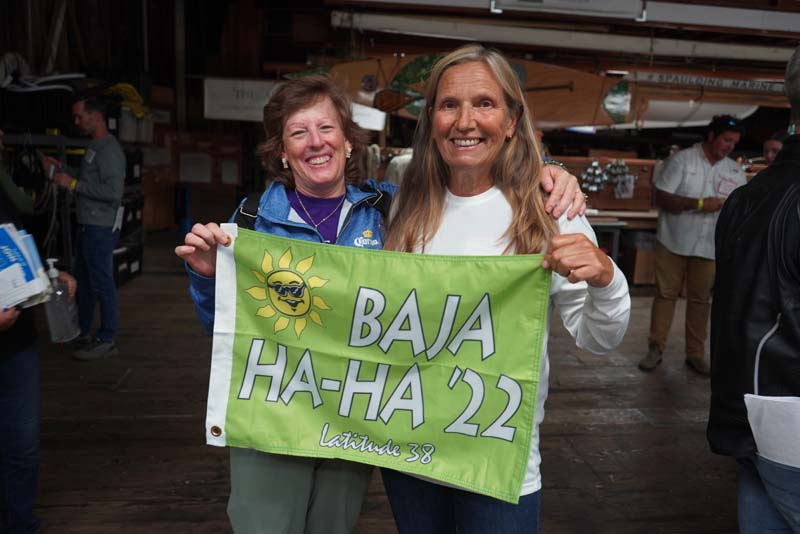
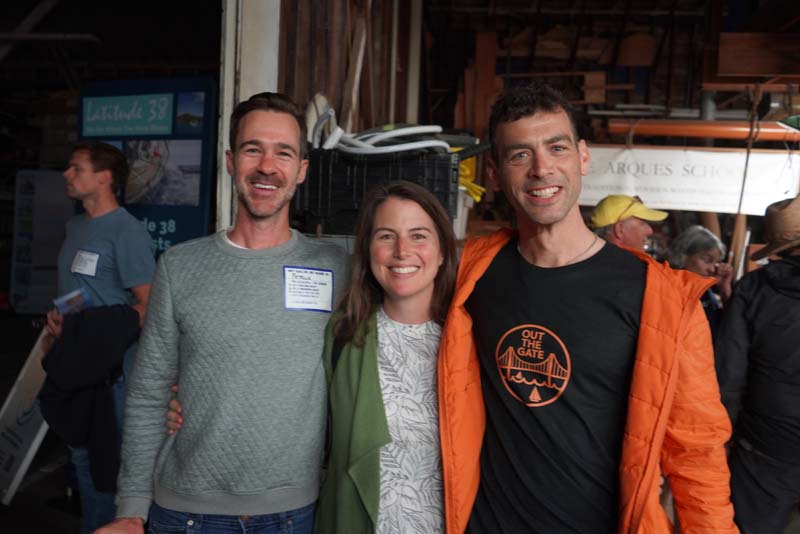
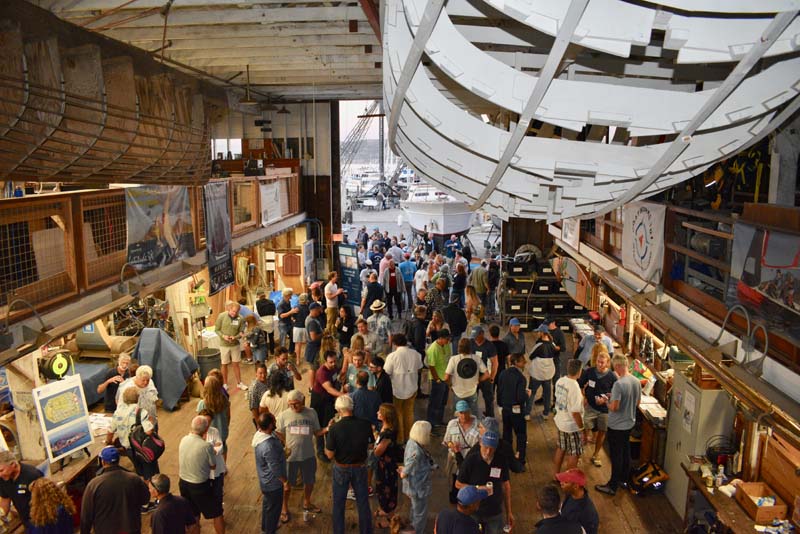
Latitude 38‘s Crew List Party has a tradition of connecting thousands of sailors for thousands of miles of sailing for over 45 years. It’s been more difficult to hold a party this past couple of years, but the online crew list now has over 1,000 entries of captains and crews looking to connect for sailing. The Crew Liat Party has usually served as a “First Date” of this online sailing crew service, which started in print in the magazine and went all digital in the early 2000s. If you didn’t make the party you can still have a good time sailing by signing up for the crew list here. We’ll hope the world allows us to resurrect our Spring Crew List Party in 2023.
Great to see everyone last night, and we look forward to seeing you on the Bay or in Mexico and hearing your new sailing adventures.
Red Tide Washes Dead Fish Onto Bay Area Shores
The Bay Area is in the grip of an algal bloom, resulting in thousands of dead fish washing onto shorelines throughout the Bay. San Francisco Baykeeper, a group that focuses on Bay Area water conditions, has been monitoring the water and communicating with relevant agencies and researchers since receiving reports of brown water from Lake Merritt, the Oakland Estuary, San Leandro Bay, and surrounding areas of San Francisco Bay in late July. The bloom has now been identified as being caused by the species Heterosigma akashiwo, a microscopic swimming alga known to form what is also called a red tide. According to Baykeeper, the species is always present in the Bay at background levels, but the region has not seen a bloom of this magnitude since 2004.
The previous bloom in the Bay was recorded on September 8, 2004, and was said to have occurred due to “a coincidence of unusually weak neap tides, calm winds, and four consecutive days of record high air temperature.” The surface water temperature that day was also the “highest ever measured” at 72.68°F.
The current bloom became visible several weeks ago. On July 29, KTVU reported that residents on the Oakland Estuary had seen “unusually murky and muddy” water for days, and in Embarcadero Cove Marina the rust-colored water was visible for days “despite the tides coming in and going out.” A week later, Oakland Estuary resident Michael West described what he saw: “It’s so thick, it looks just like when you’re stirring up your hot chocolate or something.”
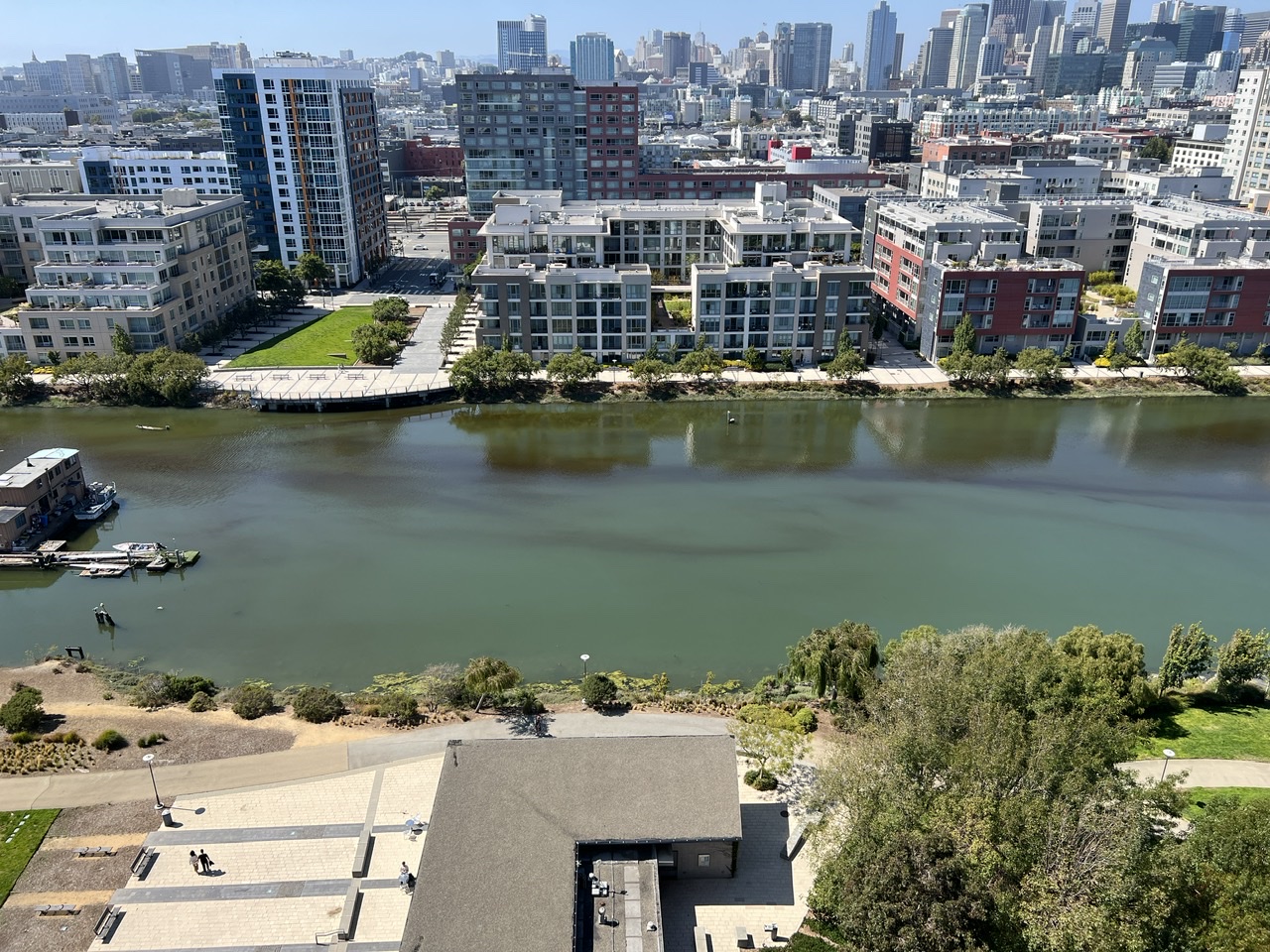
Baykeeper Executive Director Sejal Choksi-Chugh told us the organization is concerned about the numbers of fish that are dying. “The sturgeon especially have been turning up dead in great numbers, and we’re concerned about the threat to the Bay’s historic population.” And although H. akashiwo is not generally considered an acute risk to people, Choksi-Chugh issued the following statement on the organization’s website: “Baykeeper cautions against people or pets contacting the brown murky water, or eating seafood caught in the area, until the algal bloom dissipates.” An unfortunate situation for the long weekend ahead.
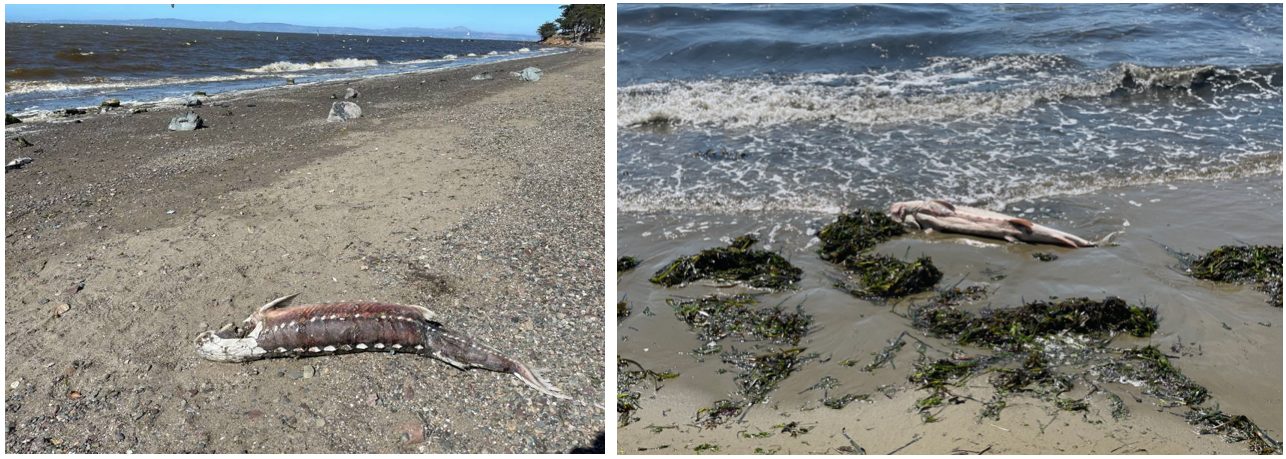
Dr. Jon Rosenfield, a senior scientist with Baykeeper, told the NY Times that the fish are “most likely being asphyxiated as a result of the algae” and added it’s likely that many more fish have died at the bottom of the Bay. The alga is expected to die off eventually as the days get shorter, temperatures cool off, and the bloom exhausts its supply of nutrients. In the meantime, the weekend’s forecast hot weather may help keep the bloom alive a little longer.
Choksi-Chugh said the Bay’s ecosystem has certainly suffered, but there is hope it will bounce back and the food chain will replenish itself. And while there is nothing anyone can do right now to fix the current problem, addressing the issues of pollution, including “reducing nitrogen and phosphorus that are entering the water from wastewater plants,” could go a long way toward preventing blooms in the future.
“Treated sewage discharges from the Bay’s 40 sewage treatment plants and the pollutants from five dirty oil refineries create conditions ideal for algal blooms,” Choksi-Chugh wrote. “Once a waterway is choked with algal blooms, the water becomes a dead zone for fish and wildlife.”
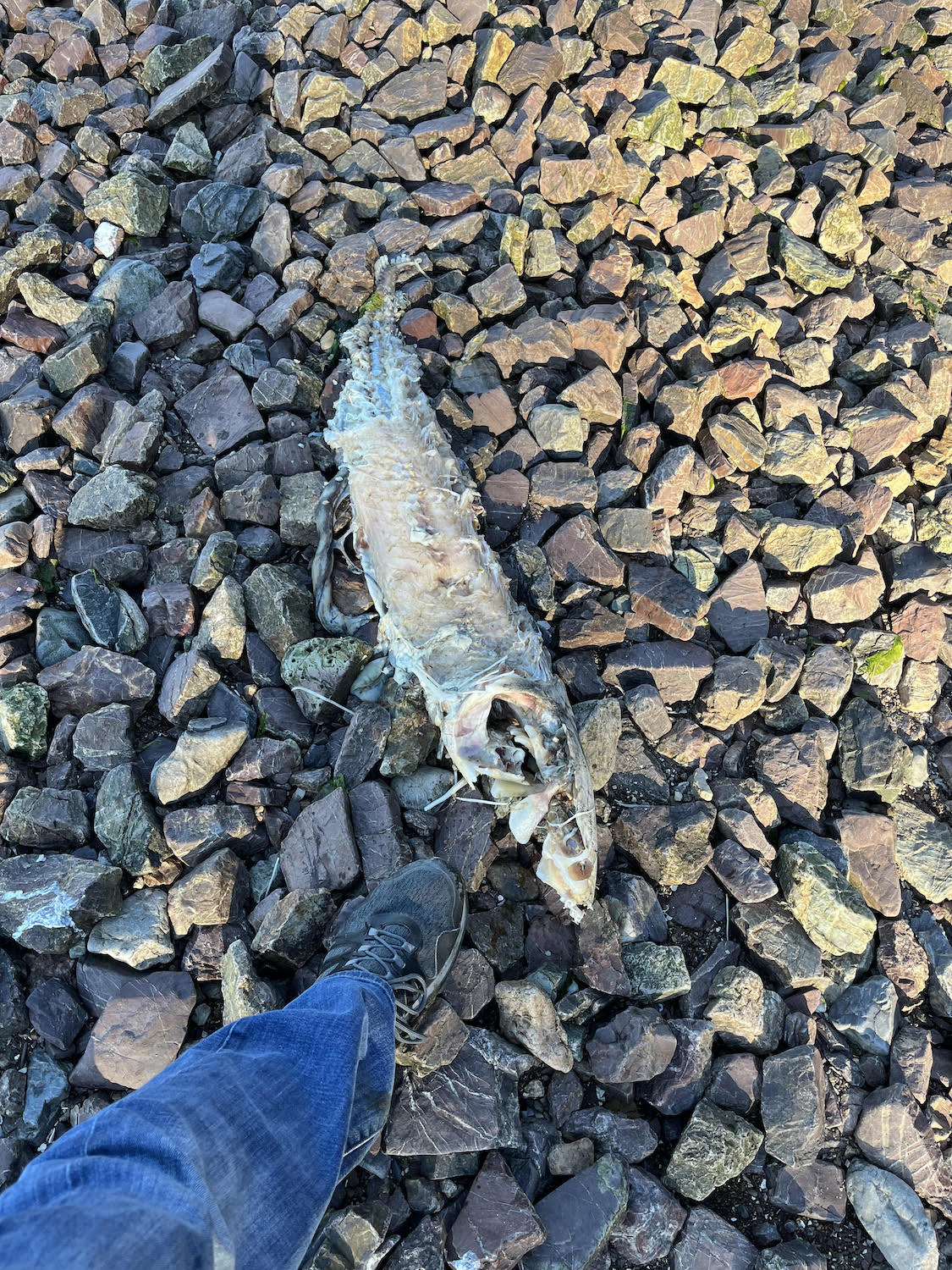
“Baykeeper scientists have been actively working for the past five years through agency technical advisory committees to prevent large blooms of any number of potentially toxic microorganisms from becoming commonplace in the Bay. The Regional Water Board needs to get excessive sewage and refinery discharges under control, and Bay Area cities need to invest in water recycling to keep wastewater out of the Bay in the first place. These changes must happen fast in order to keep algal blooms like the ones cropping up right now in the Bay from taking over more regularly. Hopefully this is a wake-up call for the agency to take faster action, because consistent algal blooms in the Bay would be detrimental to wildlife and people recreating in and around the Bay.”
Baykeeper is asking anyone who notices a large quantity of dead fish near shoreline areas where blooms have occurred to contact them via their pollution hotline or San Francisco Estuary Institute’s observation form.
We can only suggest that you shelve any plans to swim in the Bay this weekend, and instead, go sailing.
Boat Like an Owner With Nautical Access Boating Club
Lessons included with your membership. One monthly membership fee for full access. Click for the brochure.
Launching Our New Working Waterfront Page for Labor Day
What’s the greatest feature of the Bay Area? Obviously, the Bay. The weather is awesome, the topography is stunning, the people inspiring and the views magnificent, but it goes without saying the Bay Area would suffer tremendously without the Bay at its core. Beyond its scenic beauty, the Bay has been a source of food, commerce, transportation and, of course, a world-renowned sailing mecca. How amazing is it to have a temperate, 12-month sailing venue in the heart of a vibrant global economic hub? It’s the shoreline that provides the access for everyone.
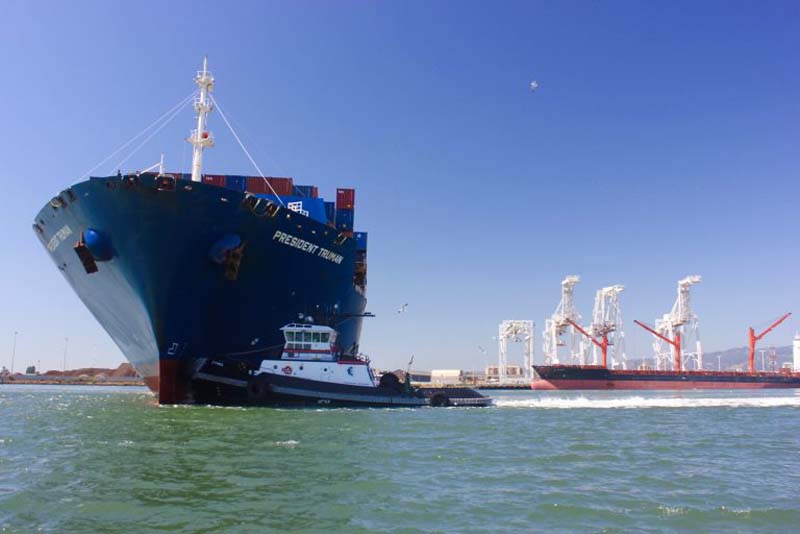
For Labor Day weekend we’re launching a new page on our website, Working Waterfront, as a tribute to the workers and businesses along the precious Bay Area and West Coast waterfront.
What keeps the Bay’s recreational and commercial activities humming is an eclectic collection of tradespeople, commercial maritime businesses, boatyards, boat builders, sailmakers, marinas, artisans, craftspeople, and others who serve as essential workers in the maintenance of a resilient, sustainable waterfront infrastructure. This creates an economic foundation for the region, as well as a fundamental resource for the entire region’s quality of life. Access to the Bay on a kayak, SUP, sailboat or yacht is a critical escape from the urban jungle.
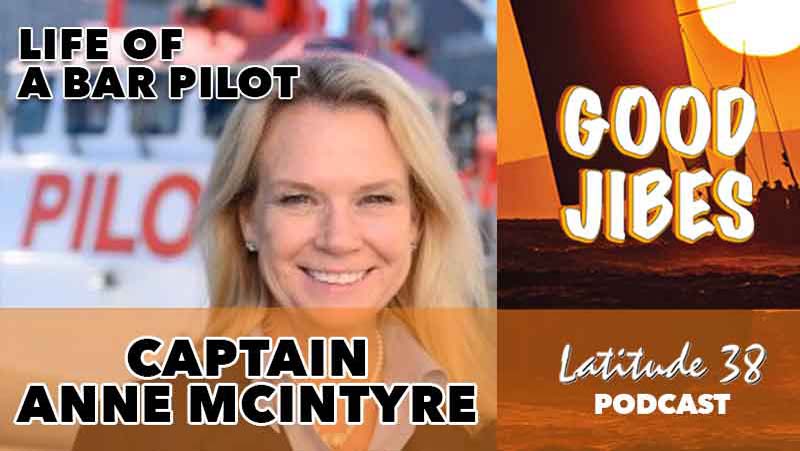
It is where the shore meets the sea that most maritime businesses need to be located. In California and, indeed, throughout the US, marine businesses have been getting displaced as real estate developers and urban sprawl encroach on land previously devoted to maintaining our maritime trades. The pressure on the waterfront has inspired a bill co-signed by Marin congressman Jared Huffman, H.R.3160, the Keep America’s Waterfronts Working Act, which aims to help preserve the jobs, skills and trades necessary to keep all forms of boating viable and accessible. Cal Maritime in Vallejo, Orange Coast College School of Sailing & Seamanship in Newport Beach, Spaulding Marine Center in Sausalito, Training Resources Matitime Institute in San Diego, and Port Townsend’s Northwest Maritime Center are a few of the West Coast organizations dedicated to growing and maintaining the skills and trades necessary to support the maritime trades.
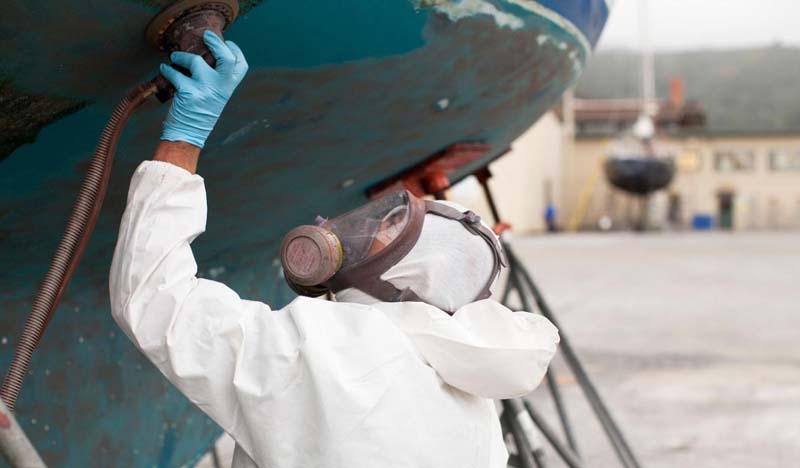
In addition to federal legislation, there is now a National Working Waterfront Network helping organize and support regional working-waterfront organizations such as the Sausalito Working Waterfront Coalition. The latter is working hard to preserve the industry and marine services available in Sausalito’s Marinship district. This is the same challenge faced from Maine to Florida, and along the Gulf Coast and the West Coast.
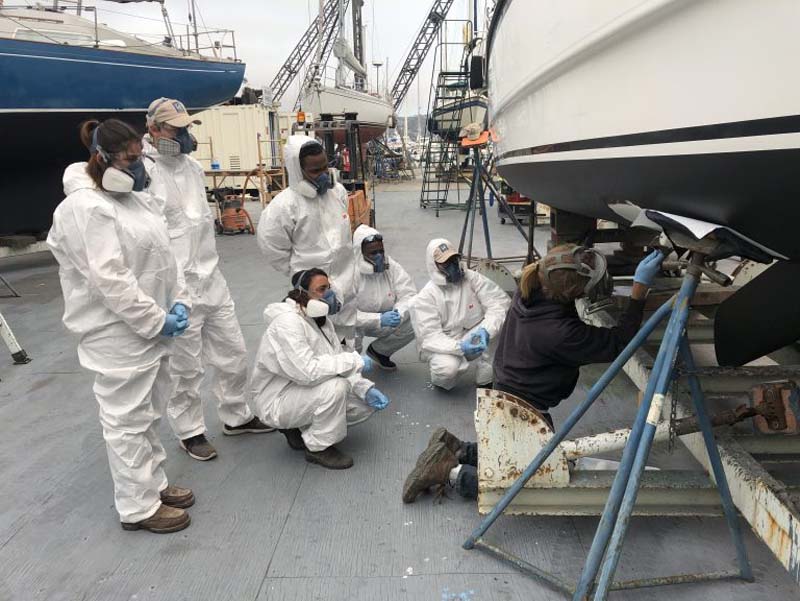
This goes far beyond people simply being able to maintain and sail their boats. The pandemic highlighted once again how many of our vital skills, technologies and manufacturing capabilities have migrated offshore. We discovered we can’t make cloth masks or the most sophisticated semiconductors. All these skills are needed right here and will only exist here if we support the infrastructure necessary to train the next generation and support the businesses that provide the jobs and services needed. Yacht clubs, sailing clubs, marinas, launch ramps, and community sailing centers are the facilities that provide access to the Bay for everyone who can’t live on the shoreline. Residential development along the waterfront reduces land available for maritime use and increases prices along the waterfront as usage shifts from public maritime services to private non-marine ownership.
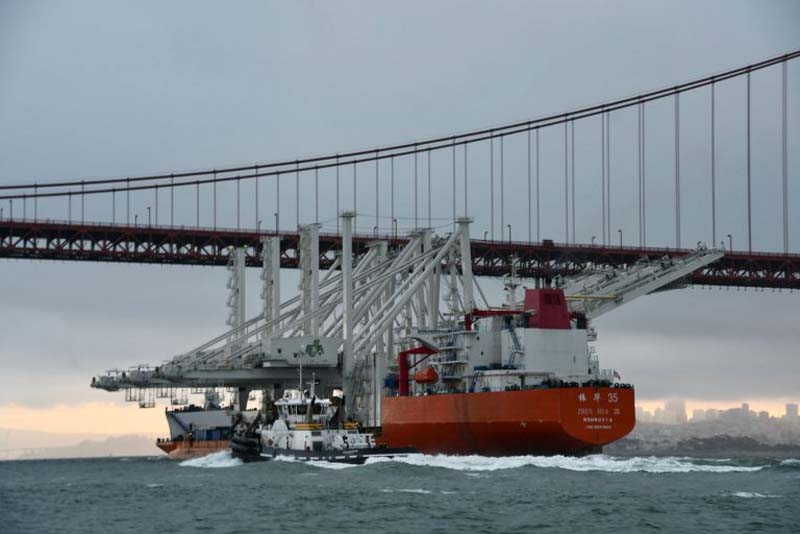
Many who drive around Alameda won’t remember when Mariner Square, now the site of a senior living facility, was the site of one of the Bay Area’s biggest boat shows and home to North Sails and many boat dealers and services. There are numerous former boat-building and repair sites now long lost to condominiums and other developments. Housing is needed, and much of the waterfront needs reconstruction and updating, but region-wide planning would make sure we don’t lose the services that support all of our local maritime activities.
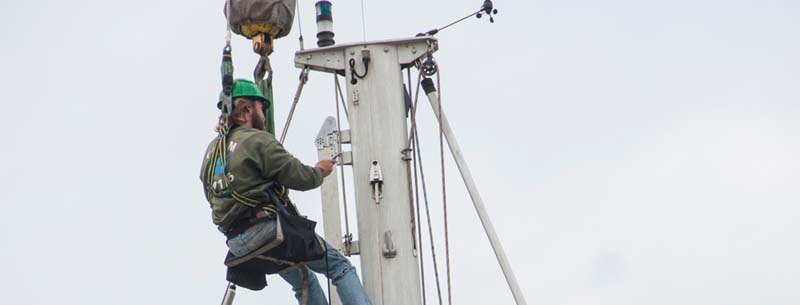
The ability to access and enjoy the Bay is being challenged. We’ve watched with alarm as the space available on the waterfront for critical maritime services has shrunk, as land developers press in on scarce waterfront space. It makes sense that marine businesses have to be at the water’s edge. It makes less sense that this land be used for residential real estate, ballparks or office parks. Latitude 38 has covered the evolution of the waterfront since its inception.
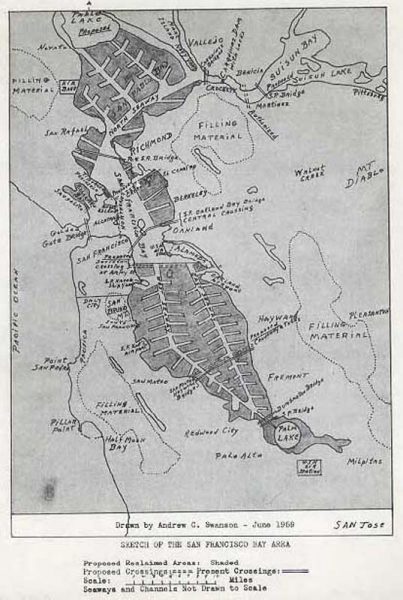
Latitude 38 prefers to focus on the racing, cruising and general sailing of West Coast sailors. However, through the years, issues of development, taxes and other impacts come along to further limit the public’s access to and enjoyment of the Bay. Throughout the 20th century much of the Bay was filled to make room for the booming local economy and population. Fortunately, as in the case of Golden Gate Park in San Francisco, or Central Park in New York, visionary people in the past recognized the value of preserving access to nature in our urban lives. The waterfront provides that critical access for both recreation and commerce.
Our life is sailing, but as we approach Labor Day 2022, we’re also launching a page to highlight stories of the Working Waterfront and pay tribute to the people, businesses and organizations that make sure the Bay works for everyone.
Long Point Race Week Brings Out the A List
“We are sailing in SoCal right now,” writes Ira Potekhina of Sausalito, “and happened to be in the middle of the Long Point Race Week. The Saturday race was on August 27. The race was at Catalina Island and started near Long Point, went around Ship Rock, and returned to Long Point. I happened to take a few pictures and wanted to share the ones that stood out to me the most. The race had so many strapping boats like Pyewacket, Pendragon and BadPak, to name a few.”
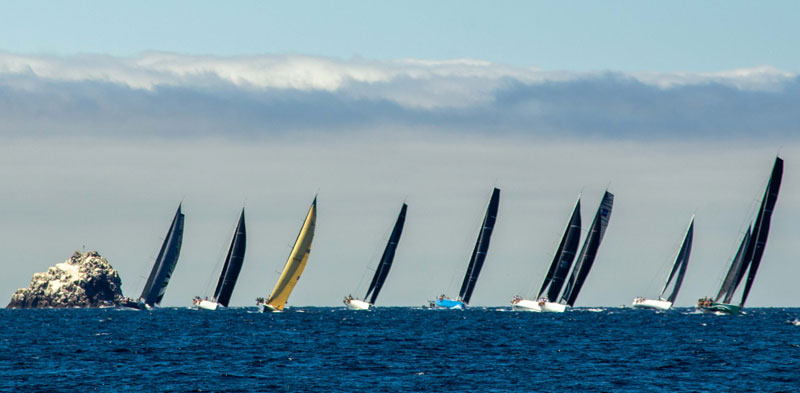
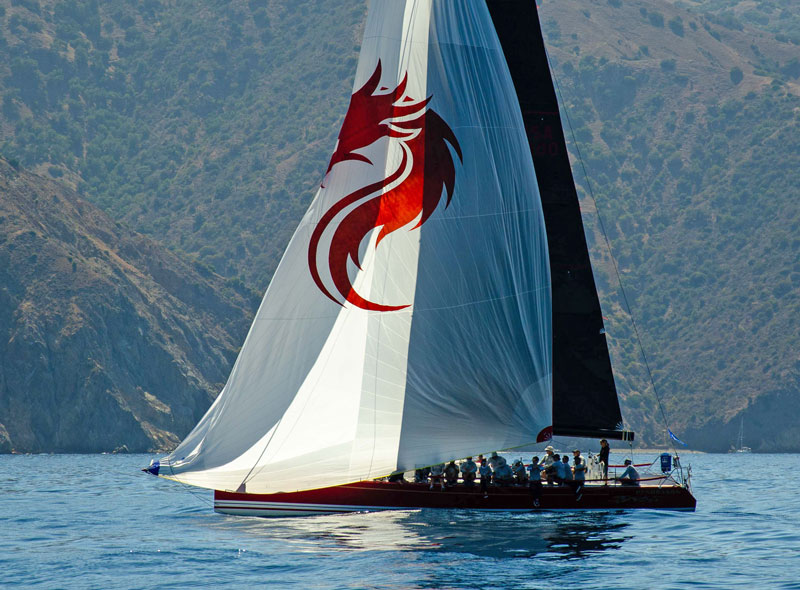
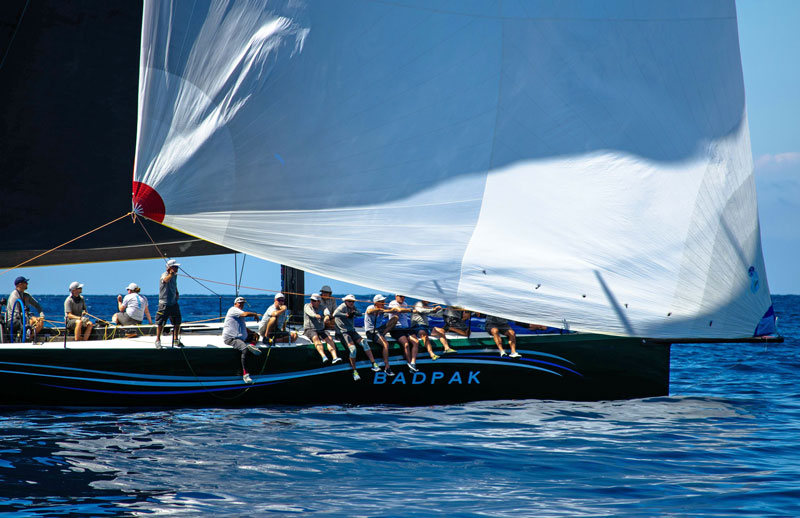
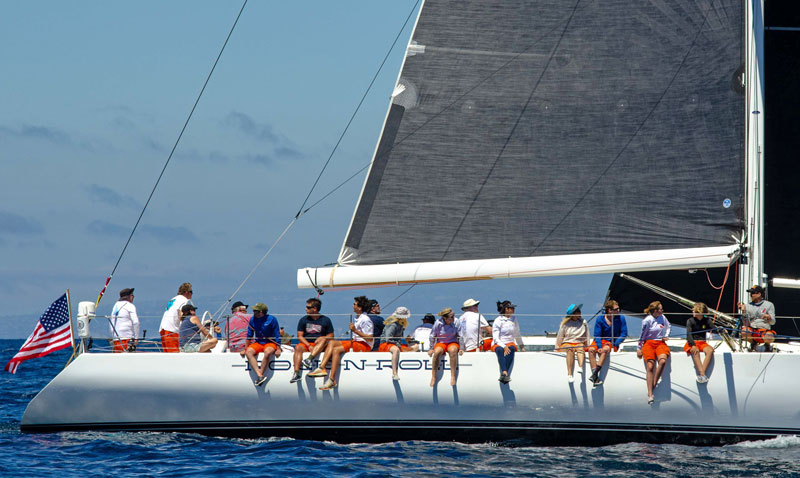
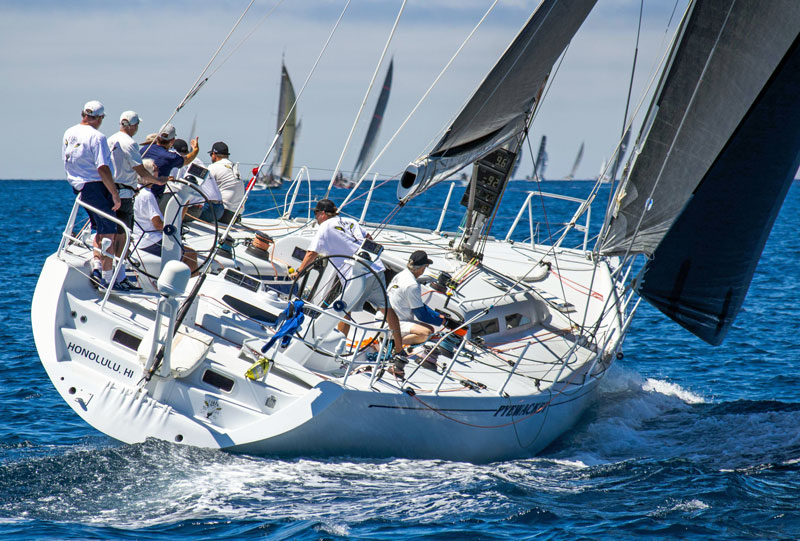
Balboa Yacht Club and Newport Harbor Yacht Club co-host Long Point Race Week, this year on August 26-28. Forty boats raced, ranging in size from Bryan Nickel’s Capri 23.5 Blitz to Damon Guizot’s R/P 77 Zephyrus.
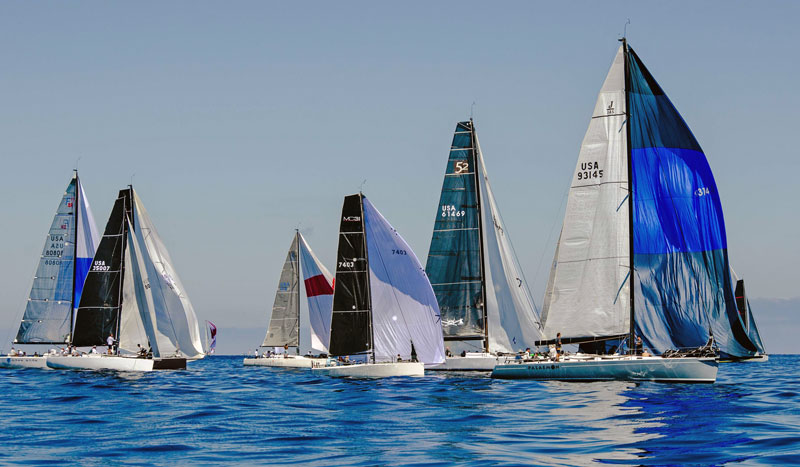
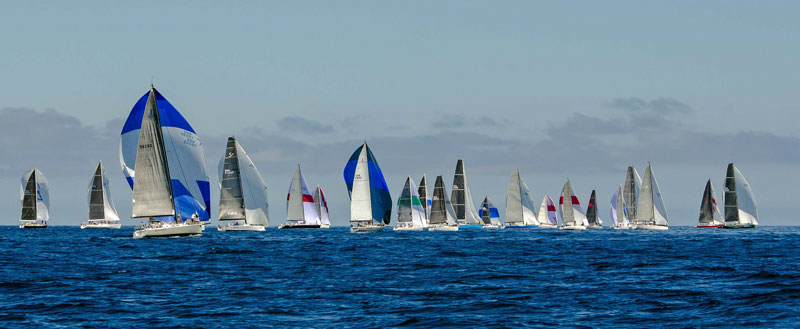
Sailagram: A Snapshot of August Sailing
Welcome to September! As we sail into the coming change of seasons, here’s a snapshot (actually, several snapshots) of sailors doing what they love throughout the month of August. So much enjoyment for so many people! Thanks to everyone who shared their photos.
Getting people to get out and go sailing is why we do what we do. Keep sailing and send your photos to [email protected].
Also, remember to pick up your September issue of Latitude 38. It’s full of great stories and photos including Pacific Cup Return Rescue, “Solo Sailor’s Transatlantic Voyage” in Sightings, Bay Area Sailors Race to Mackinac, and our usual features — Max Ebb, Racing Sheet, World of Chartering and Changes in Latitudes.
Rainman Watermakers in Stock at Cape Hatteras Marine
Rainman portable watermakers in stock at Cape Hatteras Marine. Visit our showroom near Newport Beach Harbor and ask about our Baja Haha specials. Call today at 888-884-4220 or visit our website.

